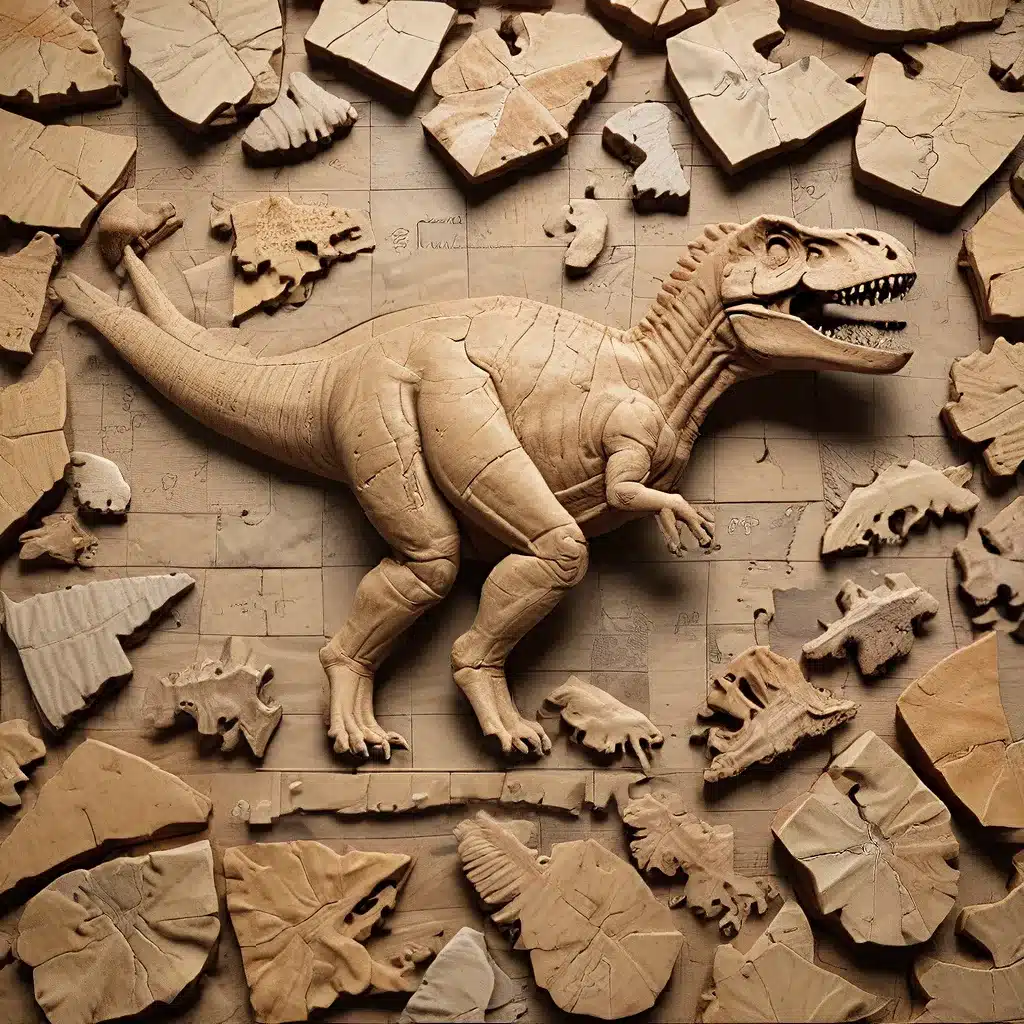
The world of dinosaurs has long captivated the imagination of scientists, historians, and the general public alike. These ancient creatures, which roamed the Earth millions of years ago, have left behind a treasure trove of clues in the form of fossil remains. Uncovering and deciphering these fossils is a complex and fascinating endeavor, one that has revealed countless insights into the lives, habitats, and evolution of dinosaurs.
Unlocking the Secrets of Fossilization
The process of fossilization is a remarkable phenomenon that allows us to glimpse into the distant past. When an organism dies, its remains are typically broken down and consumed by various natural processes. However, in some cases, the remains can become encased in sedimentary rock, preserved over time, and eventually exposed through geological activity or human excavation.
The fossilization process is not a simple one. It can involve a series of complex steps, such as the rapid burial of the organism, the gradual replacement of organic matter with minerals, and the eventual exposure of the fossil through erosion or tectonic activity. The preservation of soft tissues, such as skin or internal organs, is particularly challenging and requires exceptional circumstances to occur.
Piecing Together the Dinosaur Puzzle
Once a dinosaur fossil has been discovered, the true work of unraveling its secrets begins. Paleontologists, the scientists who study ancient life, employ a range of techniques and technologies to analyze these fossils and piece together the puzzle of the dinosaur’s life.
One of the primary tools in the paleontologist’s arsenal is comparative anatomy. By closely examining the structure and morphology of the fossil remains, researchers can make inferences about the dinosaur’s behavior, diet, and evolutionary relationships. The careful assembly of fragmented bones, sometimes likened to a three-dimensional jigsaw puzzle, can provide invaluable insights into the dinosaur’s physical characteristics and adaptations.
In addition to comparative anatomy, paleontologists also rely on a variety of dating methods to determine the age of the fossils they discover. Techniques such as radiometric dating, which measures the decay of radioactive isotopes within the rock, can provide a precise timeline for when the dinosaur lived and the geological context in which it existed.
Unlocking the Mysteries of the Triassic
The Triassic period, which spanned from approximately 252 to 201 million years ago, is a particularly intriguing era in the history of dinosaurs. This was a time of significant evolutionary change, as the first dinosaurs emerged and diversified, sharing the planet with a variety of other prehistoric creatures.
The Triassic was also a time of significant environmental change, with the gradual breakup of the supercontinent Pangaea and the rise of new plant and animal species. Paleontologists have been able to use the fossil record to reconstruct the climate and ecosystem of this pivotal era, providing a deeper understanding of the factors that shaped the development of dinosaurs and other prehistoric life.
Unveiling Dinosaur Diversity
As the study of dinosaur fossils has progressed, it has become increasingly clear that these ancient creatures were far more diverse and adaptable than previously thought. From the massive, long-necked sauropods to the fearsome, carnivorous theropods, the dinosaur family tree encompasses a remarkable range of body shapes, sizes, and ecological niches.
Ongoing research and new discoveries are constantly challenging our understanding of dinosaur evolution and behavior. Paleontologists continue to uncover evidence of previously unknown species, as well as surprising adaptations and behaviors that defy traditional expectations. This diversity reflects the remarkable resilience and adaptability of dinosaurs, which were able to thrive in a wide variety of environments over the course of millions of years.
Uncovering the Mysteries of Dinosaur Extinction
Perhaps one of the most intriguing and enduring questions in the study of dinosaurs is the mystery of their extinction. What catastrophic event or series of events led to the sudden disappearance of these once-dominant creatures from the face of the Earth?
The leading theory, known as the Cretaceous-Paleogene (K-T) extinction event, posits that a massive asteroid impact approximately 66 million years ago triggered a cascading series of environmental changes that ultimately led to the demise of the dinosaurs. This impact event is believed to have caused widespread climate disruption, the collapse of ecosystems, and the sudden disappearance of many plant and animal species, including the non-avian dinosaurs.
However, the exact mechanisms and timeline of the K-T extinction event are still being actively debated by scientists. Ongoing research continues to uncover new evidence and alternative theories, keeping the mystery of dinosaur extinction a subject of intense fascination and scientific inquiry.
Conclusion: Continuing the Dinosaur Discovery Journey
The study of dinosaur fossils is an ever-evolving field, with new discoveries and insights constantly challenging and refining our understanding of these ancient creatures. From the painstaking process of fossil excavation and analysis to the complex task of piecing together the evolutionary history of dinosaurs, the work of paleontologists is crucial to our understanding of the past and its relevance to the present.
As we continue to unravel the mysteries of the Jurassic, Triassic, and other prehistoric eras, the fascination with dinosaurs remains undiminished. The thrill of discovering a new species, the excitement of solving the puzzle of fossilized remains, and the wonder of uncovering the secrets of long-extinct ecosystems all contribute to the enduring allure of the dinosaur age.
Whether you’re a seasoned enthusiast or a curious newcomer, the world of dinosaur fossils is a vast and captivating realm, ripe for exploration and discovery. So join us on this Jurassic jigsaw adventure as we continue to piece together the puzzle of these remarkable ancient creatures and the worlds they once inhabited.


